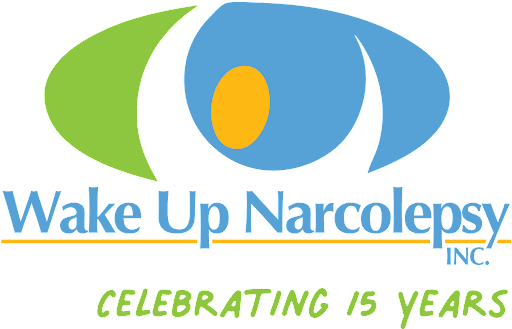
Aug 23 2023
Navigating Narcolepsy: A Guide to Medications and Promising Therapies
h in Blogs
By Tana Bao MSN, NP-C, FNP-BC, APRN
Disclaimer: WUN seeks to raise awareness about medications and treatments for people with Narcolepsy so that they can make better-informed decisions for themselves and their families. At times, WUN will make time available for representatives of individual pharmaceutical companies to share potential drug developments and opportunities for clinical trials. However, WUN does not endorse or recommend any medications or treatments or make any representations or warranties as to the content, accuracy or completeness of the presentations. The opinions expressed are solely the author’s own and do not express the views or opinions of any other entity. WUN is not engaged in rendering medical advice, and if you have Narcolepsy (or think you might have Narcolepsy), you should consult with your doctor to fully investigate treatment options to meet your individual needs.
Living with Narcolepsy can be challenging, both for patients and their families. The constant struggle with excessive daytime sleepiness (EDS), cataplexy (in Narcolepsy Type 1) and other associated symptoms can significantly impact one’s quality of life. Fortunately, medical advancements have led to a variety of medications designed to alleviate these symptoms. In this blog post, we’ll explore the different classes of medications commonly used to manage Narcolepsy, along with examples of each. Additionally, we’ll delve into the exciting realm of ongoing research, highlighting potential novel therapies that could revolutionize Narcolepsy treatment in coming years.
Stimulants: Stimulants are a cornerstone of Narcolepsy treatment, aiming to enhance wakefulness and reduce daytime sleepiness. They work by increasing the levels of certain neurotransmitters in the brain, namely dopamine and norepinephrine. This heightened neurotransmitter activity promotes alertness and helps combat the overwhelming urge to sleep. Some examples include:
- Modafinil and Armodafinil: These medications are believed to work by enhancing the activity of the neurotransmitter dopamine, which plays a role in wakefulness and alertness.
- Amphetamine-based medications: These drugs work by increasing the release and inhibiting the reuptake of dopamine and norepinephrine, which results in improved wakefulness, attention and focus.
Wake Promoting Agents: This is a class of non-stimulant medications that also help to promote wakefulness in people living with Narcolepsy. These medications work in various ways to improve alertness in the brain. Examples include:
- Solriamfetol: This is a wake-promoting agent that selectively inhibits dopamine and norepinephrine reuptake in the brain, leading to increased alertness.
- Pitolisant: This a wake-promoting medication that increases the levels of histamine in the brain, reducing sleepiness and even improving cataplexy.
Oxybates: Oxybates are a class of medications that are known to have a positive effect on daytime sleepiness and cataplexy in patients living with Narcolepsy. These effects are believed to be achieved by enhancing the levels of gamma-aminobutyric acid (GABA), a neurotransmitter that promotes relaxation and inhibits neural activity during sleep. These medications are taken at nighttime to improve sleep quality, which leads to better control of daytime symptoms. Examples include:
- Sodium Oxybate: This medication has been a significant treatment option for Narcolepsy, helping to manage both sleep disturbances and cataplexy. As its name implies, it contains sodium, and its administration involves two doses during the night.
- Lower Sodium Oxybate: This oxybate medication is a newer alternative to sodium oxybate and is designed to provide the same therapeutic benefits with significantly less sodium content. This makes it a valuable option for patients who need to manage their sodium intake. It is also taken as two doses per night.
- Sodium Oxybate (Extended Release): This medication is the most recently approved oxybate product by the FDA and is taken once nightly as an extended release alternative to the former two oxybates.
Selective Serotonin and Norepinephrine Reuptake Inhibitors (SSRIs and SNRIs): These medications are primarily used to target cataplexy, the sudden loss of muscle tone often triggered by strong emotions in people with Narcolepsy Type 1. These medications function by increasing the levels of serotonin and norepinephrine in the brain, which helps stabilize mood and control muscle tone. Examples include:
- Venlafaxine: This medication inhibits the reuptake of both serotonin and norepinephrine, prolonging their presence in the brain. This action helps regulate mood and reduce the frequency and severity of cataplexy attacks.
- Atomoxetine: By selectively targeting norepinephrine reuptake, atomoxetine enhances norepinephrine activity, leading to improved muscle tone control and reduced cataplexy symptoms.
Tricyclic Antidepressants: These medications are occasionally used to manage cataplexy and other Narcolepsy symptoms. They affect various neurotransmitters in the brain, including serotonin and norepinephrine.
- Clomipramine and Imipramine: These tricyclic antidepressants inhibit the reuptake of both serotonin and norepinephrine, similar to SSRIs and SNRIs. Their modulation of these neurotransmitters can help regulate mood and muscle tone, leading to reduced cataplexy symptoms.
Emerging Therapies and Ongoing Research: In addition, there is ongoing research into new potential medications and other therapies that may provide further treatment options for patients living with Narcolepsy. These include:
- Orexin Receptor Agonists: Orexin deficiency is a hallmark of Narcolepsy Type I. Orexin receptors play a crucial role in promoting wakefulness and regulating sleep-wake cycles. Orexin receptor agonists aim to activate these receptors, potentially restoring normal wakefulness patterns. TAK-925 (danavorexton), currently in clinical trials, is one example of an orexin receptor agonist.
- Histamine H3 Receptor Antagonists: Histamine is another neurotransmitter involved in promoting wakefulness. Histamine H3 receptor antagonists work by blocking certain receptors that inhibit histamine release. This action increases histamine activity, leading to improved wakefulness. Pitolisant is a notable example of this class, but there are others currently being researched such as TS-091 (enerisant).
- Gene Therapy: Gene therapy is an innovative approach being explored to address the underlying causes of Narcolepsy. This involves modifying genes to either enhance orexin production or regulate immune responses that contribute to Narcolepsy development. While in early stages, gene therapy holds potential for long-term, targeted management of Narcolepsy.
In conclusion, Narcolepsy management involves a range of medications with diverse mechanisms of action. Stimulants increase neurotransmitter levels for enhanced wakefulness, SSRIs and SNRIs stabilize mood and muscle tone, oxybate products enhance GABA’s effects and tricyclic antidepressants modulate serotonin and norepinephrine. Exciting developments in orexin receptor agonists, histamine H3 receptor antagonists and gene therapy hold promise for more targeted and effective Narcolepsy treatments in the future.
If you’d like to see the list of medications with information about generic names, brand names, typical dosages and side effects, please see the chart provided by the Division of Sleep Medicine at Harvard Medical School here.
References
- Gerrard P, Malcolm R. Mechanisms of modafinil: A review of current research. Neuropsychiatr Dis Treat. 2007;3(3):349-364.
- Farzam K. Stimulants. StatPearls – NCBI Bookshelf. https://www.ncbi.nlm.nih.gov/books/NBK539896/. Published February 13, 2023.
- Fujimoto T, Rikimaru K, Fukuda K, et al. Discovery of TAK-925 as a Potent, Selective, and Brain-Penetrant Orexin 2 Receptor Agonist. ACS Med Chem Lett. 2022;13(3):457-462. Published 2022 Feb 4. doi:10.1021/acsmedchemlett.1c00626
- Inoue Y, Uchiyama M, Umeuchi H, et al. Optimal dose determination of enerisant (TS-091) for patients with narcolepsy: two randomized, double-blind, placebo-controlled trials. BMC Psychiatry. 2022;22(1):141. Published 2022 Feb 22. doi:10.1186/s12888-022-03785-7
- Kantor S, Mochizuki T, Lops SN, et al. Orexin gene therapy restores the timing and maintenance of wakefulness in narcoleptic mice. Sleep. 2013;36(8):1129-1138. Published 2013 Aug 1. doi:10.5665/sleep.2870
- Kushida CA, Shapiro CM, Roth T, et al. Once-nightly sodium oxybate (FT218) demonstrated improvement of symptoms in a phase 3 randomized clinical trial in patients with narcolepsy. Sleep. 2022;45(6):zsab200. doi:10.1093/sleep/zsab200
- Maski K, Trotti LM, Kotagal S, et al. Treatment of central disorders of hypersomnolence: an American Academy of Sleep Medicine clinical practice guideline. Journal of Clinical Sleep Medicine. 2021;17(9):1881-1893. doi:10.5664/jcsm.9328
- Thorpy MJ, Bogan R. Update on the pharmacologic management of narcolepsy: mechanisms of action and clinical implications. Sleep Medicine. 2020;68:97-109. doi:10.1016/j.sleep.2019.09.001atments in the future.
Photos
- Pill Container: Photo by Anna Shvets: https://www.pexels.com/photo/clear-plastic-container-and-medicine-capsule-3683051/
- Hands Holding Pills: Photo by Karolina Grabowska from Pexels: https://www.pexels.com/photo/crop-man-doctor-showing-pills-in-clinic-4021801/

